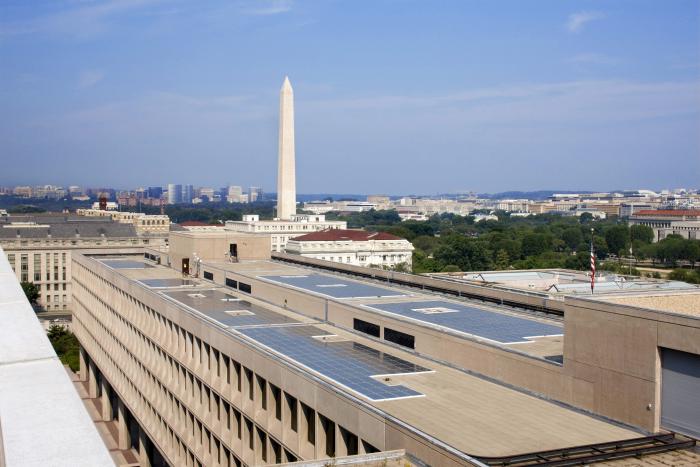2017 Will Be a Pragmatic Year for Solar

Editor’s Note: In 2020, SunPower announced the completion of the strategic spin-off of its manufacturing division into a separate business named Maxeon Solar Technologies, Ltd. As a result, SunPower has expanded its offerings to drive future growth. The SunPower Equinox® system now offers multiple panel options, including front- and back-contact panels, all of which are responsibly and rigorously quality tested to provide the best energy solution for your home.
This blog was originally published by The Huffington Post.
When it comes to the state of global energy markets, we can all agree that uncertainty is the new normal. Betting on one energy source over another has proven to be unwise, and it is impossible to predict where the market will take us next.
Just over a year ago, more than 190 nations came together to finalize the COP21 agreement, which culminated decades of disparate negotiations to embrace clean energy sources as the most practical means to reduce carbon emissions.
For solar, one might expect such an event to be the catalyst for growth, yet there are other factors at work.
We’ve seen a meteoric rise in solar adoption over the past five years largely due to a combination of free-market forces, sensible public policies and private-sector innovation. This progress is an example of how government can play a supportive role but also let the market do what it does best.
I’ve always believed that solar is a non-partisan energy source. At the core, it is largely an issue of consumer choice, customization and economics, not unlike high-tech or automotive innovation.
In 2017, we need to focus on three key areas to ensure that solar is well-positioned for the future.
Complementary roles of government and the marketplace
Public-private initiatives designed to give solar fair representation at the table cannot be viewed as all-or-nothing propositions. Just the opposite. It’s important to get every idea out there and view each one through a practical lens. Despite market turbulence, the solar industry isn’t as reliant on government to thrive. However, ensuring a vibrant energy marketplace is a two-way street: If upending current policy measures interrupts growth and innovation, it’s important that we don’t try to fix what isn’t broken. We should keep this in mind when discussing next steps with the Clean Power Plan and other national programs.
Moving beyond era of 'One vs. the Other'
I have no doubt that the future will be powered in large part by renewable sources, but we must identify ways in which clean and traditional sources can evolve together. The world’s largest energy companies are taking steps to diversify their portfolios, but companies that embrace integrated traditional renewable models will be the ones that are likely to succeed in a clean energy economy. SunPower’s business model and relationship with Total are living proof that renewable and traditional energy models can not only co-exist, but thrive alongside one another. We need both in this 21st century energy economy. (See an example here: When Renewable and Conventional Energy Innovate Together.)
Recognizing solar as a high-tech sector
One need only look at the competition between industry leaders when it comes to efficiency gains — the amount of sunlight that can be converted to energy — and how innovation in solar cell and solar panel technology is helping to usher in a new era of solar. Consider that SunPower recently achieved a 25.2 percent efficiency rate on a cell nearly 40 times the size of one developed by the University of New South Wales in 1999. Smaller cells and panels are driving electricity production and require less space on rooftops. The next few years are shaping up to be breakthrough ones for solar technology.
Right now, we’re in the midst of an unprecedented transformation in the energy market. We’ve been here before, and there will be winners and losers. It’s important to not interrupt the marketplace in a way that creates negative pressure.
Solar is also critical to our nation’s economic competitiveness agenda. If America fails to innovate in this space, we fail to advance economically and as a society. Today, nowhere is this more apparent or important than with respect to energy infrastructure and innovation.
The year 2017 is gearing up to be a pivotal one for our sector. For solar, in particular, we have a foundation that we didn’t have five years ago. The marketplace is in a night-and-day different place. Both government and the private sector have unique opportunities to build on it.
Our economy and environment stand to benefit equally.